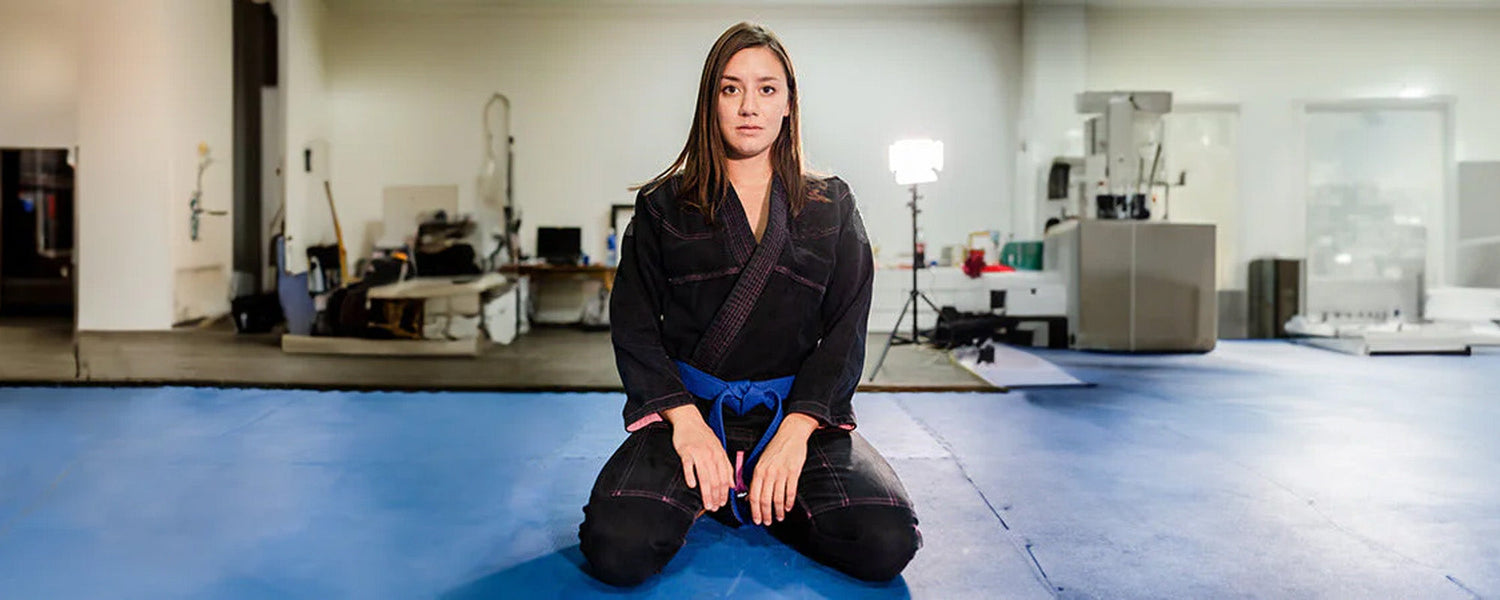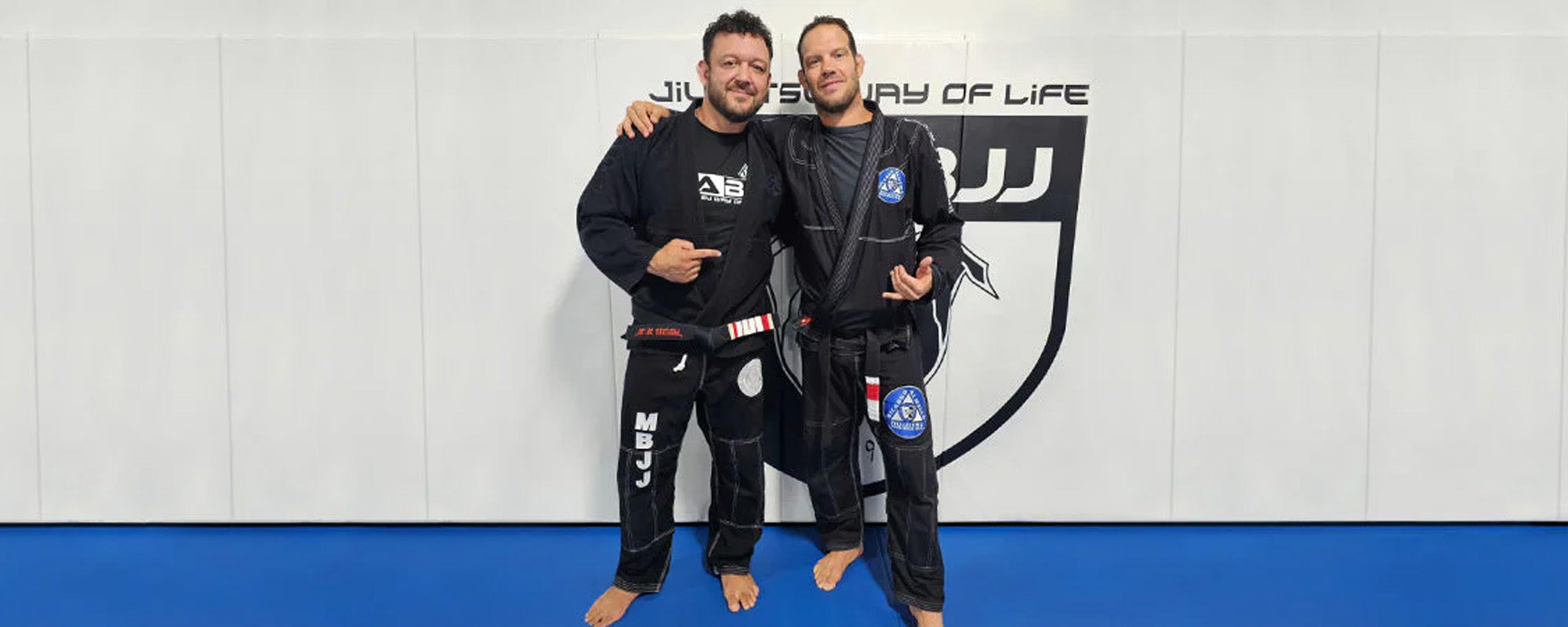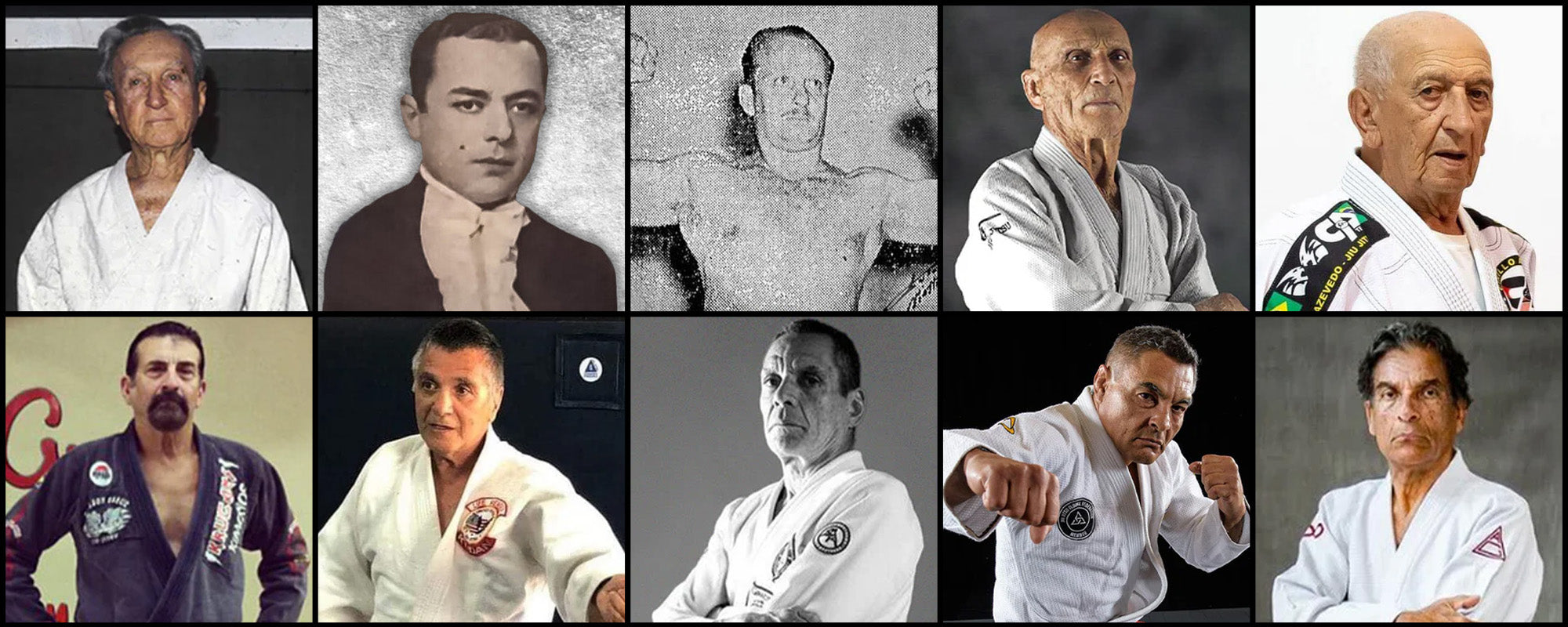Table of content
The blue belt is an important belt rank because it marks the first adult belt promotion in BJJ. The blue belt is the stage where students have learned most basic techniques and have advanced to the intermediate level. At this stage, most fighters also come up with their preferred fighting style. Students with blue belts are skilled grapplers capable of going up against opponents of higher belt rank.
1. How to Get a BJJ Blue Belt?
BJJ white belts often have the same question on their minds when they start training: when will they get a blue belt? The answer is that it depends on how early they start learning and can adjust to BJJ training.
Learning how to perform basic BJJ techniques helps familiarize them with the proper movements, which will help them create their own fighting styles later. The faster white belts practice and master multiple BJJ techniques, the faster they will be promoted to higher belt tiers. Other factors can contribute to being promoted to higher belt ranks faster, including proof of integrity, modesty, and good sportsmanship.
To get a BJJ blue belt, beginners have to work hard, learn basic skills, train consistently, and demonstrate good character. However, it is also possible to speed up the process by engaging in competition. BJJ students best polish their skills by competing against real opponents in BJJ tournaments, demonstrating whether they are close to being promoted to the rank of blue belt.
2. What Makes a Blue Belt Dangerous?

Listed below are the main factors that contribute to BJJ blue belts being dangerous:
2.1. Eager to Excel
BJJ blue belts who treat BJJ as a hobby or take BJJ seriously both share the desire to improve their skills and train often in the hope of becoming better fighters.
2.2. Highly Motivated
It is a great achievement to be promoted from white to blue belt. Rising to a higher belt rank can fill a blue belt with motivation. This newfound motivation may inspire a blue belt to try taking down more skilled opponents to work towards the next belt level.
BJJ blue belts are dangerous because of their passion, motivation, and dedication. Being promoted to the adult tier often exhilarates younger BJJ athletes. Being able to spar with and even beat more experienced BJJ practitioners can boost their confidence.
2.3. Understand Basic Techniques
Being promoted to blue belt indicates that you are now familiar with the basics of grappling.
During their time as white belts, BJJ practitioners become familiar with the fundamental BJJ techniques. As blue belts, they learn how to combine them to create more advanced techniques. Being promoted to a blue belt also means that most practitioners have mastered all of the basic jiu-jitsu moves, including how to do takedowns.
Blue belts who train and practice regularly become athletes capable of matching practitioners of higher belt ranks in terms of skill. At this level, blue belts know techniques that can help them defend themselves on the streets.
2.4. Highly Confident
Newly promoted blue belts often are highly confident in their current capabilities. This belief they can win can help them succeed in multiple aspects of life beyond the mat, whether school or work.
3. Blue Belts Who Started as Juniors Are More Dangerous
Junior BJJ practitioners are children between the ages of 6-13. BJJ blue belts who start their journeys as junior athletes make more progress than those who start training as adults. When starting BJJ training as an adult, learning the basics requires more time because one needs to get their body in shape and understand the fundamentals of BJJ. Most adult white belts are promoted to blue belts within two years, enough time to learn the basic techniques but not enough to be considered a technical fighter.
Meanwhile, a junior athlete has to start by working up from the juvenile jiu-jitsu belt ranking system. They usually need at least 10 years to become a blue belt. Having 10 years of BJJ experience results in them learning more techniques and having a better understanding of applying technical skills. This can make children with blue belts potentially more dangerous than adults with blue belts.
4. Technical Skills All Blue Belts Must Have
To be promoted to blue belt, BJJ practitioners must demonstrate a mastery of several technical skills. Every academy has its own required list of techniques for blue belt promotion. Practitioners must know how to do the following:
- Guard
- Side and back control
- Mount
- Escape from any dominant position
- Defend against submissions
- Understand good body position
- Under hooks, over hooks, and cross hooks
- Break free of the guard position
- Adjust body position and get back into a guard.
- Pass or break a guard by using knee or back steps
- Guard game
- Knee shields
- Half guard
- Adjust or break the grip
- Stand up game
- Takedowns.
- Sweeps
- Submissions
5. Blue Belt Vs. Other Belts
Most blue belts can beat practitioners of higher belt ranks, typically when they are close to being promoted to purple belts.
In BJJ history, there have been instances where blue belts have defeated brown and black belts. For example, Nick Rodriguez started his BJJ training in 2018 as a successful wrestler and was a blue belt in 2019. He was selected for the ADCC World Championship 2019 and defeated big names like Mahamed Aly, Cyborg Abreu, and Orlando Sanchez. Rodriguez became the runner-up after being defeated by Kaynan Duarte.
6. FAQs
6.1. Why do many practitioners quit BJJ at the blue belt?
Answer: The most common reason practitioners quit BJJ at the blue belt level is the risk of injury. In combat sports like BJJ, all belt levels risk getting injured, but blue belts are more likely to suffer severe injuries that could temporarily put them out of commission.
6.2. How difficult is it to get promoted to blue belt?
Answer: The blue belt is the first adult belt rank. To be promoted to blue belt, athletes must know all the BJJ basics. It is hard to get a blue belt in less than one year. Average BJJ athletes get their blue belt after two years of training.
6.3. How many people have succeeded in reaching the blue belt?
Answer: According to Rener Gracie, only 10% of athletes reach the rank of blue belt. Out of that 10%, only 1% become black belts.
6.4. Can a blue belt effectively defend itself?
Answer: Blue belts know how to quickly take down an opponent and escape from holds. These are useful self-defense skills to have on or off the mat.
6.5. How many years do practitioners stay as blue belts?
Answer: Students ages 18 or older stay as a BJJ blue belt for at least two years. Students who start earlier stay as blue belts for varying lengths of time.
7. Conclusion
BJJ blue belts are considered dangerous because of their high morale. Blue belts who are recently promoted for the first time can fill them with excitement. This increased motivation can drive them to work harder to achieve success as quickly as possible.
Blue belts are no longer considered beginners and aim to reach higher adult belt ranks. While working towards belt promotions, their improvement in skill and mastery of BJJ moves helps them do wonders. Many blue belts have made history as junior belts or adults by conquering more experienced fighters.












Leave a comment
This site is protected by hCaptcha and the hCaptcha Privacy Policy and Terms of Service apply.